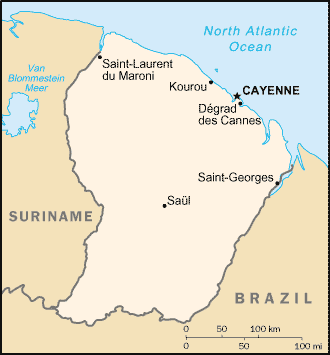Capital: Georgetown
Population: 765,000 (UN, 2003)
Year of Independence: 1966, from Britain
Type of Government: Republic within the Commonwealth
GNP: $2.5 billion (2000 est.)
Natural Resources: bauxite, gold, diamonds, hardwood timber, shrimp, fish
Political Parties: Alliance for Guyana (AFG) [includes Guyana Labor Party or GLP and Working People’s Alliance or WPA]; Guyana Action Party (GAP); Guyana Labor Party (GLP); People’s National Congress (PNC); People’s Progressive Party (PPP); Rise, Organize, and Rebuild (ROAR); The United Force (TUF); Working People’s Alliance (WPA)
With agriculture and mining comprising its economic backbone, the profit growth Guyana experienced in the late 1990s after the government released its hold on 80 percent of the country’s industries has since slowed. After becoming a republic in 1970, socialist tendencies and practices failed to give the fledgling country the support it needed to thrive. The economy has been poor for decades, and the lush landscapes of rain forests that offer enormous possibilities for tourism are merely the target of overzealous industrial programs. When the British settled in Guyana in the 18th century, they imported a number of indentured servants from India. Thus the population today is an amalgam of Indian or mixed African and indigenous descent. Segregation between these ethnic groups in most aspects of life causes consistent political and social discord, especially in the face of severe economic measures. The current president, Bharrat Jagdeo of the Indo-Guyanese People’s Progressive Party, faces the daunting task of creating the country’s near-non-existent infrastructure, eliminating environmental threats, and reducing the expanding poverty that plagues the nation.



